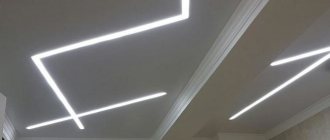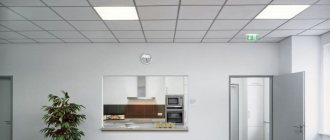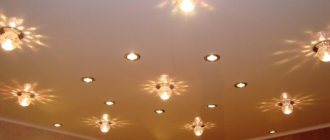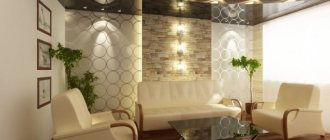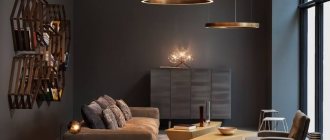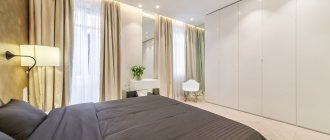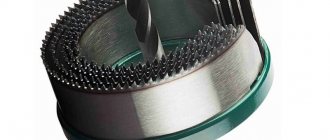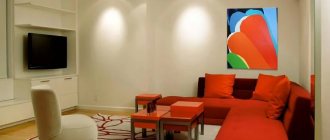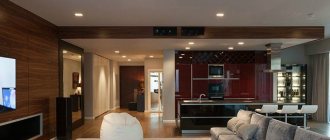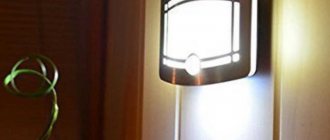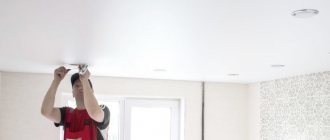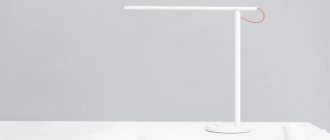What does an LED lamp consist of?
LED lamps are replacing conventional lighting sources due to their long service life, low energy consumption and high efficiency. When choosing a lamp, it is important to pay attention to the details of which it consists.
LEDs and lamp optics
Light emitting diode
- an artificial semiconductor device that glows when electric current is passed through it in the forward direction. This is one of the most important elements of the lamp, so it is important to choose reliable manufacturers - we work with Samsung and Seoul Semiconductor. The color of the glow depends on the semiconductor material and phosphor.
Based on the installation method, LEDs are divided into output, SMD and COB LEDs.
In a device marked COB, many crystals coated with phosphor are placed in one diode, which helps to achieve high brightness in a smaller area. This technology is used in the production of compact LED lamps with high luminous flux.
Lamps with SMD LEDs consist of packaged crystals filled with phosphor. Before assembling the lamp, packaged LEDs are soldered onto an aluminum substrate - this is necessary for better heat removal from the LED crystal.
LED Light Module
Module
– basic configuration of the luminaire, allowing the manufacture of any configuration of the luminaire. It consists of a housing (anodized aluminum profile), an aluminum substrate with soldered LEDs, a diffuser or secondary optics, a power source (driver), sealed cable entries, and side plugs. The advantages of this design are a dynamic convection cooling system, which makes it possible to reduce the weight and size of the lamp.
Modules are different
- number and type of LEDs used;
- the presence of a built-in controller that allows you to control the brightness of the LEDs;
- weight and size indicators, depending on the amount of heat removed from the LEDs;
- temperature (3000 K., 4000 K., 5000 K.);
- glow color – one-color, two-color;
- input parameters of the power source - standard (220 V), low voltage (12 V, 24 V, 36 V);
- secondary optics.
We use drivers in the basic modification and cooperate with suppliers TK Argos-Trade, NPK TransET (St. Petersburg), Trion LLC (Moscow).
Types of dimming:
Dimming
– the process of controlling lighting intensity using dimmers (light controllers). Dimming of LED lamps is carried out in accordance with one of the protocols:
- 1-10V;
The dimmer in this case is implemented in the form of an ordinary potentiometer: a signal from 1 to 10 V is sent through a separate pair of wires. - TRIAC;
To dim LED lamps, a triac or symmetrical triode thyristor is used. The TRIAC protocol semisistor can pass current in any direction, so it can be installed on networks with direct and alternating current. - DALI;
Digital dimming technology using the DALI protocol is based on the use of special digital buses that can connect up to 64 consumers. Operates at voltages up to 48 Volts and allows you to save several lighting scenarios at once. - Push DIM;
A type of dimming that allows you to use only two wires for connection. Buttons with normally open contacts are control elements. A short press on the button turns the lamp on or off, and a long press adjusts the brightness.
External lighting equipment is divided into the following subtypes:
- light source - the group combines various types of artificial light devices;
- lighting fixtures - several parts necessary for the proper functioning of the light source (there are many varieties);
- additional functional elements - used to distribute the light flux at a given angle, in the required color range and required intensity. This also includes various devices for mounting lighting devices;
- control units - software and hardware, a system that ensures uninterrupted operation of lighting equipment;
- protective system and safety elements - parts and systems that ensure the safe operation of lighting fixture systems, elements that prevent the negative impact of the external environment on the equipment.
Lamp Drivers
Driver
– one of the main components of an LED lamp, providing the LEDs with a given current. The main difference between the driver and the power supply is the stabilization of the output current. Maintaining the current at a given level allows you to operate LEDs in a more gentle mode, and this increases the service life of the product.
Important characteristics of the lamp driver are power, the ability to install the driver with any dimming protocol, output current, power factor, ripple factor, IP protection degree. IP degree of protection is a classifier of degrees of protection that regulates the penetration of foreign objects - dust and water in accordance with GOST 14254-96.
Outdoor lighting equipment: classification
External lighting can be:
- utilitarian (part of the complex for traffic safety);
- artistic (installed as a means of attracting attention to a specific object, installed to illuminate facades, architectural buildings, used as decorative elements).
Depending on the goals, the design and characteristics of lighting equipment and the lighting system equipment itself will change.
Diffusers for LED lamps
Diffusers
– transparent or matte sheets that protect LEDs from water and dust. Often, lamps emit too bright a luminous flux, which creates discomfort - matte diffusers help to avoid this problem, eliminating too bright light and glare.
Diffusers are:
Made from transparent polycarbonate
Made from monolithic polycarbonate using additives that protect against ultraviolet radiation. Advantages: resistance to aggressive environments, strength, ease of processing and cleaning, fire safety.
Made from matte polycarbonate
The light transmittance of matte polycarbonate diffusers is lower than that of their analogues. This helps to avoid the glare effect when looking at LEDs: such diffusers are used to illuminate sports stadiums, art workshops, and medical institutions. Both transparent and matte polycarbonate decomposes under the influence of aqueous or alcoholic solutions of alkalis, gaseous ammonia and its solutions, as well as amines.
Made from mineral tempered glass
Unlike its analogues, mineral tempered glass can be used in aggressive environments: it is not susceptible to alkalis, ammonia and amines. It should be borne in mind that diffusers made of this material are not as durable as diffusers made of polycarbonate.
Secondary optics
Secondary optics
– lenses that change the opening angle and allow you to create the necessary form of light distribution, that is, the luminous intensity curve (LIC). Basically, the CSS is formed by the primary lens of the LED.
KSS happens:
Concentrated
– the opening angle of the luminous flux is no more than 30°, used in industrial premises with high ceilings, to illuminate interior details;
Deep
– the opening angle of the luminous flux is on average 60° – 80°, used in rooms with average ceiling heights, at railway stations;
Cosine
– the opening angle of the luminous flux is 120°, used outdoors, in industrial and warehouse premises with low ceilings, for illuminating building facades and parking lots;
Semi-wide
(the opening angle of the light flux is 140°) and wide (the opening angle of the light flux is 160°), used on highways, in transport tunnels, and elongated corridors of public buildings.
Uniform
– the opening angle of the light flux is 180°, used mainly in park areas and on streets;
Sinus
– the opening angle of the luminous flux is on average 110° – 90°, used for decorative lighting and for the formation of dim light in corridors, halls of buildings, in parking lots, for decorative lighting.
Main varieties
There are different classifications of lamps, you need to understand each of them in order to choose the right type of equipment for your home or site. It is necessary to take into account the purpose and design, type of light sources, inclusion features and design.
Lighting option in the corridor.
Depending on the purpose
It is worth determining what the lamp will be used for. Products are divided into several groups:
- General purpose lamps. This is the name of all models that completely illuminate the room and are mounted on the ceiling in the middle of the room. These can be chandeliers, lampshades, etc.
- Local lighting devices. Suitable for part of the room if general lighting is not needed. These are spots, sconces, table and wall lamps, lampshades on rods.
- Decorative options for illuminating the interior or facades of buildings. They can be either in a classic case or built-in.
- Street lamps work outdoors and in unheated rooms. They use weather-resistant materials, and the moisture protection class is higher than in devices for living rooms. When choosing, it is worth considering local climatic conditions.
- Garden models most often have autonomous power supply or are charged from the sun during the daytime. Underwater - a separate type with a sealed housing for lighting pools.
Outdoor models can be installed in rooms, but the opposite cannot be done.
Decorative lighting for the kitchen
Classification by species diversity
There are quite a lot of species, all the main groups are on sale, each with its own characteristics:
- Ceiling chandeliers come in two types. Hanging ones are mounted on a bracket, usually have several branches and take up a lot of space, which is not very convenient in rooms with low ceilings. Ceiling chandeliers are located at the very surface of the ceiling; it is either a wide lampshade or a design with branches that diverge to the sides rather than pointing down.
- Wall lamps (sconces). They are attached in one or several places and are used both for local lighting (directional flow of light) and general lighting if a diffuser lampshade is used. They can consist of one or more light sources, suitable for hallways and bedrooms.
- Tabletop models are used to illuminate the workspace. What is important about them is practicality, ease of setup (the position of the lampshade and the brightness of the light must change) and stability. Don’t forget about the decorative component; the lamp must match the interior.
- Floor lamps (floor lamps) are convenient because they can be moved from place to place. They usually have a massive lampshade installed.
- Spots. Recessed lamps that are located anywhere on the ceiling. They may practically not protrude beyond the surface, but they can also be voluminous, while taking up less space than any other option. If you install several of these lamps, you can provide normal illumination of a room or part of it, or highlight a wall or other object.
- Current-carrying busbars (track lamps). Several lampshades are placed on one rod, the position and direction of which can be adjusted.
- Night lights create a subdued background in the bedroom. Can project images onto ceilings and walls.
- Armstrong ceiling lamps. Their size matches the size of the slabs, so installation is simple and does not require special equipment.
Ceiling chandelier for low rooms.
The track lamp can be adjusted to suit any room.
It is worth combining different types of lamps, this will create a comfortable environment and save electricity, since it is not practical to constantly use a general lighting chandelier.
Types by light source
Several types of lamps are used in household lamps:
- Incandescent lamps. They have a small resource and consume the most electricity.
- Fluorescent lamps. There are options in the form of tubes, they are installed in industrial lamps, and there are models with a standard base for domestic needs. Three times more economical than incandescent lamps and last longer.
- Halogen lamps are installed in spotlights. They provide bright, uniform light with a lifespan of about 3000 hours.
- LED light bulbs are the most economical. They are produced under different cartridges, and during operation they heat up much less than their analogues.
- Built-in LEDs are an interesting solution that has only one drawback. When light sources fail, you often have to throw away the lamp, since it is difficult to find LEDs of the required configuration.
- Combined - combine 2 types, usually these are light bulbs with a standard base and LED backlighting.
LED chandeliers look impressive.
Check the warranty period for the lamps and keep the receipt until it expires.
Types by number of light bulbs
When choosing, you need to take into account the specific emitted power of different types of lamps: LED - 3 W per m2, fluorescent - 8 W per m2, halogen - 11 W per m2, incandescent lamps - 18 W per m2. Based on the number of lamps, lamps are divided into 2 types:
- With one lamp. Usually these are large lamps, floor lamps, sconces that diffuse or direct light depending on the purpose of use. Typically, fairly powerful light sources are used.
- Lamps with two or more lamps or LEDs. The quantity can reach several dozen, it all depends on the design, lighting area and power of the elements.
The more bulbs, the larger the area a chandelier can illuminate.
Switch types
There are several options, each with its own characteristics:
- Keyboards. Allows you to turn the light on or off with one click. There are options with several keys to change lighting modes or turn on lights in different rooms.
- Rope ones are installed in floor lamps and wall lamps.
- Dimmers are devices that adjust the brightness of lighting using a rotating element.
- Touch - allow you to turn the light on and off and adjust its intensity by touching your fingers.
- Acoustic. The module responds to palm clapping, which is quite convenient. But the system will respond to any loud sounds.
- Remote. Allows you to turn on and adjust the light using a remote control or smartphone.
You can use both the remote control and your smartphone to control it.
You can combine different types of switches for convenient lighting control.
LED lamp mounts
Depending on the operating conditions, different types of fastenings may be required.
Types of fastenings
Console
Cantilever mounting of lamps involves installation on separate independent parts - brackets (in other words - consoles or headbands). This is the most common method of installing lighting fixtures.
Universal
Universal mounting means installation on a pipe, wall or ceiling. The UM type allows you to achieve a wider opening angle of the lamp.
Suspended
Suspended mounting is useful when it is not possible to install the lamp on a console. This method is used for rooms of large area and height. The hanging height of the lamps is chosen taking into account the lighting standards.
On a car beam
The mount is intended for installation as an additional lighting device on cars, trucks and off-road vehicles.
For gas stations;
The mounts are specially designed for installation at gas stations. These models can be manufactured in both standard and explosion-proof versions.
Rope pass-through
This type of fastening is used when it is impossible to install the lamp on a ceiling or pendant. The lamps are mounted on a cable stretched between the walls.
To select lamps wisely, you need to pay attention to their operating conditions, luminous output, luminous flux, degree of protection IP and KSS. These parameters are influenced by the components of LED lamps: LEDs, power supplies, secondary optics.
What are fluorescent lamps, their design and operating principle
Fluorescent lamps are the most common type of lighting, which is found in administrative premises (kindergartens, schools, offices), as well as in households and industrial areas. Its installation and subsequent energy costs will be inexpensive. Design features allow them to be used for both external and internal lighting.
The light source in such devices is a fluorescent lamp. The principle of its operation lies in the ability of metal vapors and some gases to emit light when exposed to an electric field. The lamps look like glass tubes.
The structure of a fluorescent lamp can be imagined as follows: inside it there is a coating - a phosphor, in the tube there is an inert gas with mercury vapor. At each edge of the lamp structure there are tungsten spirals with a layer of barium oxide, which act as cathodes. They are connected to two pins, which connect the lamp to an external power source. This is a typical layout of such lighting devices.
There are also fluorescent lamp designs that are designed for small-sized lamps. They have a slightly different appearance, and the pipe can be bent into a spiral, ring or other shape.
The above designs have their positive and negative sides. The advantages of such lighting devices include:
- ability of increased light output: a 20 W device is equal in power to a 100 W incandescent lamp;
- Efficiency is higher than that of lighting fixtures with incandescent lamps;
- large selection of shades of emitted light;
- longer service life compared to incandescent lamps;
- The emitted light is not point-like, but diffuse.
If we talk about the disadvantages of such lighting devices, then they include:
- requires special disposal due to mercury vapor content;
- the radiation from such lamps has an uneven spectrum, which is unpleasant for the eyes;
- Some lamps may produce unpleasant noises during operation.
It is not advisable to use a lamp with fluorescent lamps in a design with automatic switching on (when installing motion sensors), since too frequent activation of lighting devices leads to their rapid failure, reducing their service life.
Types of lighting equipment (for outdoor lighting)
The classification of light sources of outdoor lighting systems is determined by the lamps used. Read about the types and types of lighting sources in this article. Sources differ in brightness, power, service life, and light spectrum.
A lighting device is selected for each specific light source:
- spotlight – has an increased brightness indicator, high beam density. Installed for lighting high-rise structures. Often used as a decoration element;
- A lamp is a group of devices with many subgroups, varying in size, functionality, and method of fastening.
Spotlights: features of use
Compliance with operating rules is very important, because if you do everything correctly, you can significantly increase their service life.
Tips for placing spotlights:
- You should not install lamps at a distance of less than half a meter;
- Energy-saving lamps should be used for suspended ceilings;
- if you place several lamps around the perimeter of the walls, this will visually enlarge the room.
Care for spotlights must be appropriate, only then will their service life increase. Here are the basic tips from spotlight lamp manufacturers:
- Appliances need to be cleaned at least once a year;
- periodically check the integrity of the wiring;
- do not use aerosols;
- take precautions;
- do not use lamps near open fire;
- keep the device away from water;
- Use spotlights for their intended purpose.
Lamps for spotlights should be selected taking into account the housing manufacturer. So the service life will be increased several times. It is also important to choose the size of spotlights correctly. Only then will the lighting equipment look appropriate in the space.
So, having decided on the type of spotlights, you can safely calculate their number and, using your imagination, distribute them over the surface. How to install them is described in the article “Installation of a spotlight.” With the help of these little helpers, you can not only organize decent lighting, but also transform the room. A large selection and affordable pricing policy become pleasant bonuses. Don’t be afraid to experiment and your home will sparkle with bright colors and become a real cause for envy!
How to connect an LED lamp.
The connection is similar to incandescent and fluorescent lamps - you should turn off the power to the socket and screw the lamp into it.
If you need to connect several LED light sources, the following connection options are possible: serial and parallel.
However, this connection should not be used in practice. Even LEDs from the same batch do not guarantee the same voltage drop. Because of this, the current on an individual LED element may exceed the permissible limit, which can cause the elements to fail.
The serial version requires a minimum number of wires, but is used extremely rarely. The reason for this is two shortcomings. Firstly, when one light bulb burns out, the entire circuit fails. Secondly, the lamps do not work at full power, since when connected in series, the voltage is summed up. Perhaps the only cases where a serial connection is justified are Christmas tree garlands and entrance lighting. In these cases, low power ratings for many light sources are acceptable.
The scheme is quite simple:
- from the distribution box the phase goes to the switch;
- from the switch the phase passes to the LED lamp;
- the neutral wire is connected to the second contact of the last lamp in the circuit;
- The phase wire passes from the lamps to each other.
Serial connection diagram for LED lamps.
The parallel method is used most often. The main advantage is the supply of the same voltage to all light bulbs in the circuit. In the event of a burnout, only a failed light source falls out of the circuit, which is easy to replace.
You can connect in parallel in two ways: beam and daisy chain.
The beam method is reliable. Although this requires a large amount of cable. And it is important to think about the moment of connecting all the elements. Most often, a terminal block is used for this. On one side, a phase is supplied to its jumpers. On the reverse side, connect the wires coming from the light bulbs. It is recommended to fill the inside of the terminal block with anti-oxidation paste. Also, instead of a block, use twisted wires with soldering.
Diagram of parallel beam connection via terminal block.
When using a loop circuit, the phase and neutral wires from the panel and switch are connected to the first light bulb. From it the cable is fed to the second and so on. Thus, each light bulb (except the last one) is connected to four wires: two phase and two neutral.
Diagram of parallel connection using a daisy chain circuit.
Connecting light bulbs operating on 12V voltage is similar, only a step-down transformer must be included in the circuit.
Diagram of parallel connection of 12V spotlights via a transformer.
Indoor and local lighting: device features
It must be remembered that the power of LEDs is selected in a ratio of 1:8 to emitters with an incandescent filament. This means that where a regular 80 W lamp was enough, a 10 W LED device will be quite sufficient. LED emitters have the same sockets, which means that all you need to do when replacing simple ones is unscrew the old ones and screw in the new ones.
For local lighting, the ideal option would be to use LED strips or spots, which just need to be directed to a specific area. In this way, you can zoning the room. Often local illumination is provided by tabletop devices. In this case, you just need to screw an LED lamp with a matte diffuser into them. It will make the flow softer, which means it will not dazzle.
